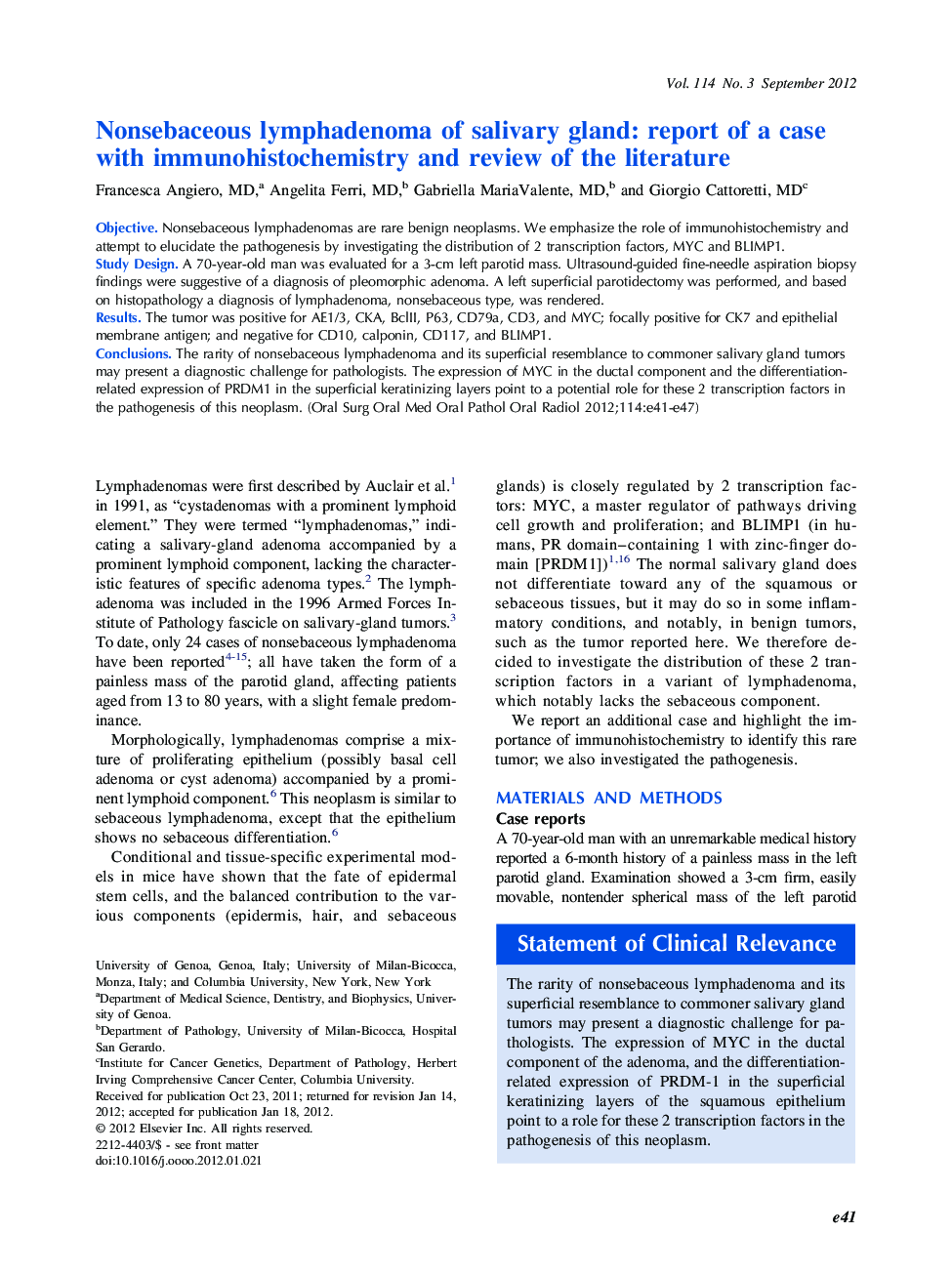| Article ID | Journal | Published Year | Pages | File Type |
|---|---|---|---|---|
| 6059115 | Oral Surgery, Oral Medicine, Oral Pathology and Oral Radiology | 2012 | 7 Pages |
ObjectiveNonsebaceous lymphadenomas are rare benign neoplasms. We emphasize the role of immunohistochemistry and attempt to elucidate the pathogenesis by investigating the distribution of 2 transcription factors, MYC and BLIMP1.Study DesignA 70-year-old man was evaluated for a 3-cm left parotid mass. Ultrasound-guided fine-needle aspiration biopsy findings were suggestive of a diagnosis of pleomorphic adenoma. A left superficial parotidectomy was performed, and based on histopathology a diagnosis of lymphadenoma, nonsebaceous type, was rendered.ResultsThe tumor was positive for AE1/3, CKA, BclII, P63, CD79a, CD3, and MYC; focally positive for CK7 and epithelial membrane antigen; and negative for CD10, calponin, CD117, and BLIMP1.ConclusionsThe rarity of nonsebaceous lymphadenoma and its superficial resemblance to commoner salivary gland tumors may present a diagnostic challenge for pathologists. The expression of MYC in the ductal component and the differentiation-related expression of PRDM1 in the superficial keratinizing layers point to a potential role for these 2 transcription factors in the pathogenesis of this neoplasm.
